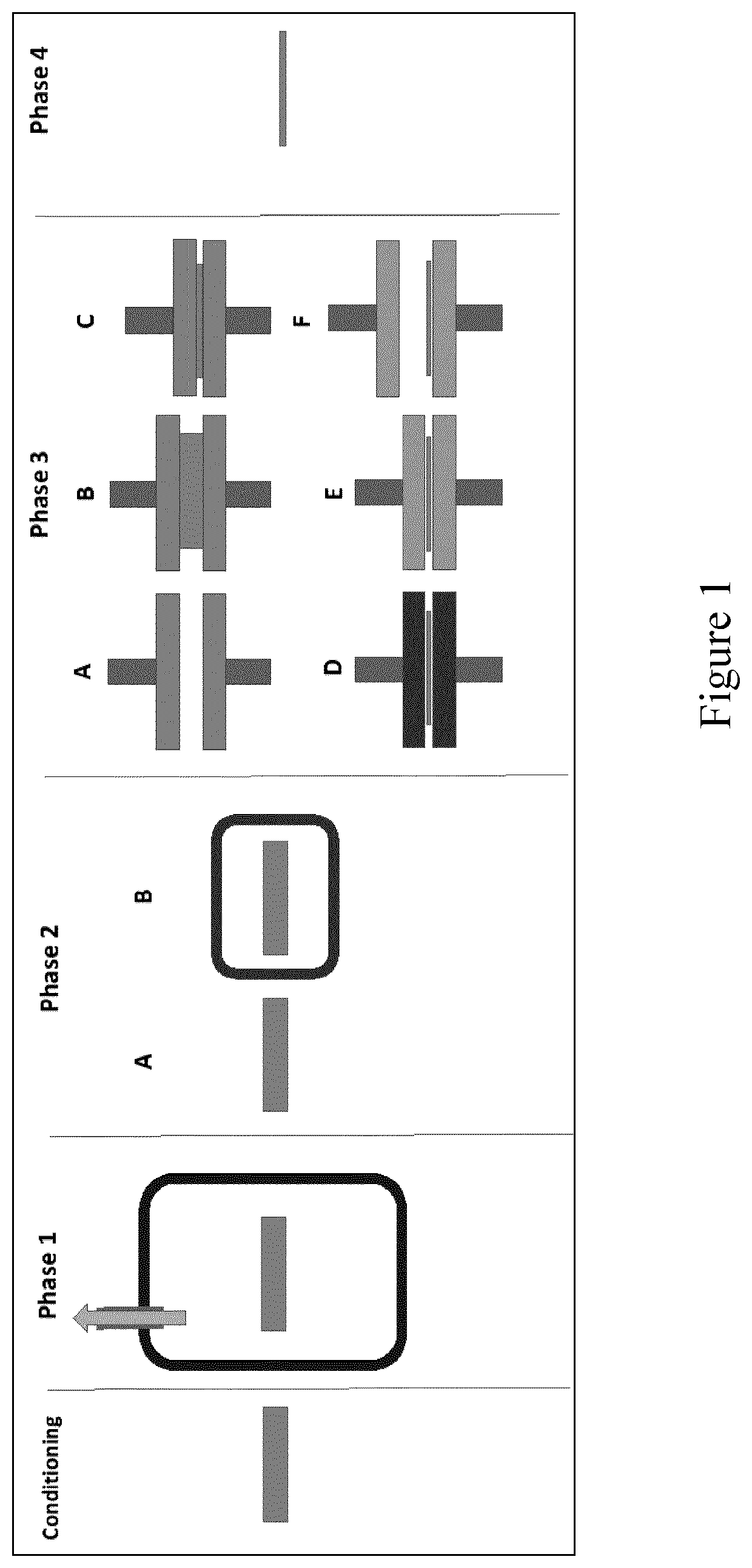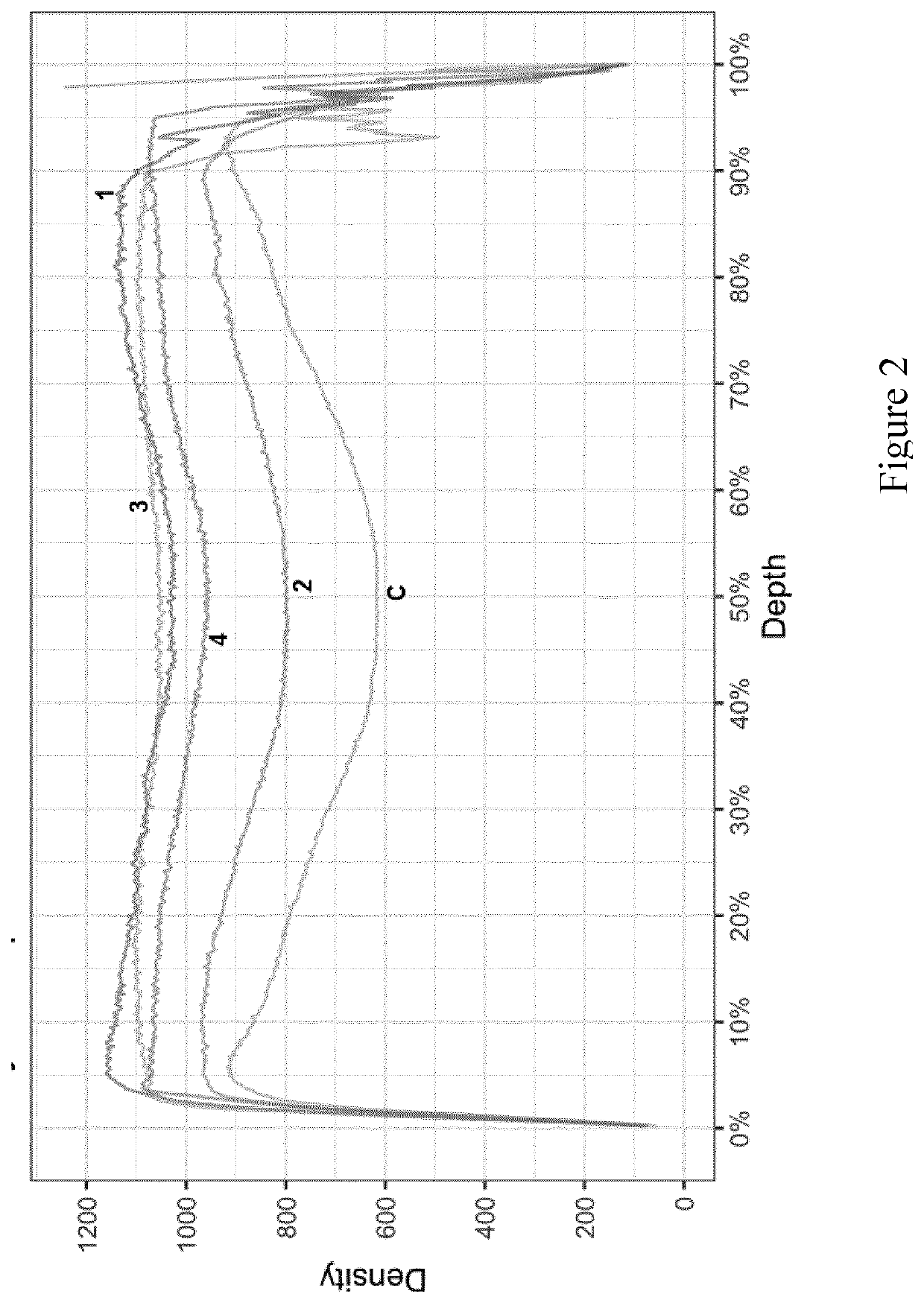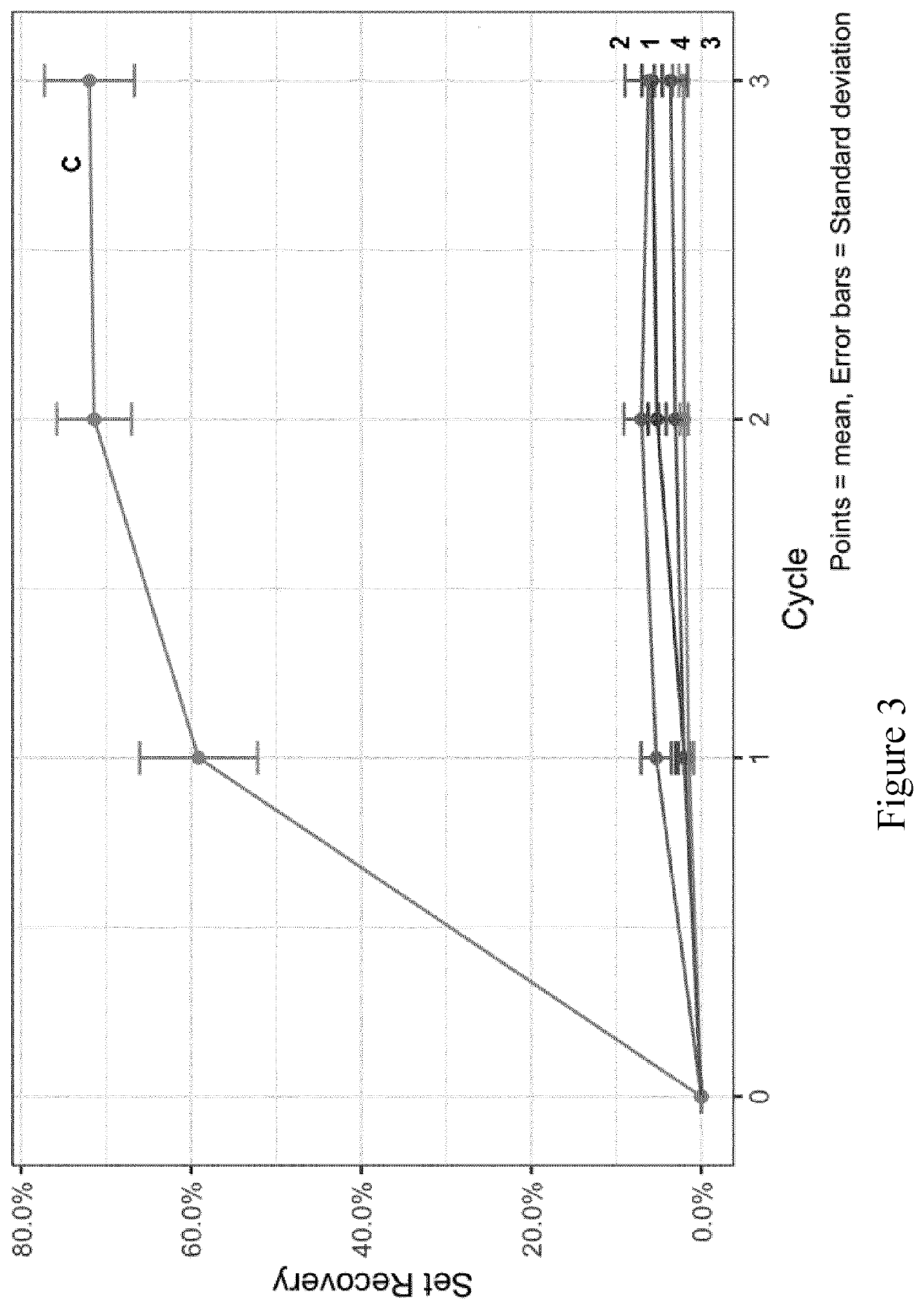Method for preparation of densified wood article
a densified wood and article technology, applied in the field of densified wood articles, can solve the problems of reducing the set recovery, reducing the recovery of set, and reducing the swelling of densified wood back to the original shape (set recovery) too high, so as to improve the strength and strength properties, the effect of increasing density and hardness
- Summary
- Abstract
- Description
- Claims
- Application Information
AI Technical Summary
Benefits of technology
Problems solved by technology
Method used
Image
Examples
example 1
on of a Resin Composition
[0097]A PF resin was synthesized having a low molecular weight, low monomer content, and long storage stability at ambient temperature. A mixture of phenol, water, an aqueous 50 wt. % formaldehyde solution and an alkaline catalyst was prepared with relative amounts 30 wt. % water, 29.5 wt. % phenol, 22.5 wt. % formaldehyde, 2 wt. % NaOH. A condensation reaction was carried out in a temperature range between 65 and 70° C., until the tolerance of the resin solution with an aqueous sodium chloride solution with a concentration of 10% was between 1:15 and 1:20. The reaction was stopped by cooling to room temperature.
[0098]The finished resin had the following features:[0099]Solid content (2 h / 130° C. / 0.6 g): 58.4%,[0100]Viscosity (20° C.): 115 mPas,[0101]pH-value: 10.3,[0102]free Formaldehyde: 0.40%,[0103]free Phenol: 0.31%,[0104]Water tolerance (20° C.)>1:50,[0105]Average molecular weight Mw: 486 g / mol,[0106]Stability at 25° C. until water tolerance is not infin...
example 2
on of Densified Wood Articles
[0107]Aqueous phenol resin solutions with a target solids content were prepared, by mixing the resin composition obtained in Example 1 with water. Target resin solids contents were 30 wt. % and 40 wt. %.
[0108]Poplar (Populus sp.) wood specimens were provided with a target initial thickness of 20 mm. The specimens were conditioned at 20° C. and 65% relative humidity, followed by vacuum impregnating at 0.001 bar for 60 minutes. After impregnation, the specimens were air dried overnight, followed by drying at 60° C. in an oven for 48 hours or 60 hours.
[0109]The samples then underwent THM treatment in a hot press equipped with a water-cooling system (Langzauner Perfect type LZT-UK-30-L). The target thickness was 9.8 mm. The samples entered the press at a platen temperature of 170° C. Mechanical force was applied until target thickness was reached and held for 2-3 minutes. Platen temperature was increased to 200° C., and the samples held for a further 0-2 min...
example 3
gradation Test
[0113]A sample (No. 5) was provided according to the method as described above, wherein the impregnating resin had a 30% solids content and the sample was oven dried for 72 hours. Two controls were provided: one densified without resin impregnation and an untreated control.
[0114]A fungal degradation test was performed on these samples. After 4 weeks of exposure, sample 5 had a mass loss of about 5%. The controls had a moss loss of around 12-13%. After 6 weeks of exposure, sample 5 had a mass loss of about 5%, the densified control had a mass loss of about 12% and the untreated control had a mass loss of about 15%. The mass loss of the untreated control continued, while the mass loss of sample 5 and the densified control stabilized around 13%.
PUM
| Property | Measurement | Unit |
|---|---|---|
| density | aaaaa | aaaaa |
| pressure Pi | aaaaa | aaaaa |
| temperature Td | aaaaa | aaaaa |
Abstract
Description
Claims
Application Information
 Login to View More
Login to View More - R&D
- Intellectual Property
- Life Sciences
- Materials
- Tech Scout
- Unparalleled Data Quality
- Higher Quality Content
- 60% Fewer Hallucinations
Browse by: Latest US Patents, China's latest patents, Technical Efficacy Thesaurus, Application Domain, Technology Topic, Popular Technical Reports.
© 2025 PatSnap. All rights reserved.Legal|Privacy policy|Modern Slavery Act Transparency Statement|Sitemap|About US| Contact US: help@patsnap.com



